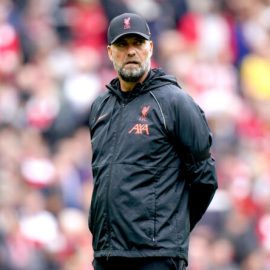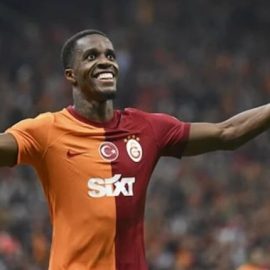Tottenham Hotspur, fresh from the exertions of a thrilling 4-1 victory over FC Twente at White Hart Lane, have signalled their intentions of moving towards the elite of English football by announcing, not one but, two potential stadium moves.
In 2007, with the list of season ticket holders expanding, Tottenham Hotspur began to look at a possible stadium re-development of the 36,310 capacity White Hart Lane stadium. Their chairman Daniel Levy was extremely conscious of the fact that all of Spurs’ peers in the Premier League at the time were enjoying increased revenue streams due to larger stadiums and as a result held an advantage over every other club in the division.
His initial plan was to look at the re-development of Tottenham’s home ground and increase its capacity at the same time. As one of the most supported English teams in the world, Spurs have access to a very large Diaspora and would fill a 50,000 plus stadium without too many problems.
Under Tottenham’s original plans in 2007 they would have had to vacate White Hart lane for two years, with a possible ground-sharing arrangement at West Ham or Wembley as an option. Tony Winterbottom of the London Development Authority was brought on board to oversee the transition from White hart lane. Winterbottom also oversaw Arsenal’s successful move from Highbury to the much improved Emirates Stadium.
Tottenham’s original plans were rejected but after a thorough consultation and redesign of their ideas, the club has announced in October 2008 that the Northumberland Project was the route the club was willing to pursue. Planning permission for their £400 million redevelopment was granted on September 31 2010.
Ken Shuttleworth, Founder of Make, the scheme’s architect, said:
“The master plan balances the old and the new, creating a world-class setting for the new stadium and wider development. We have designed an exciting scheme that would be an amenity for the whole community, benefiting the wider Tottenham area.”
Stadium Architect David Keirle of KSS, said:
“The stadium itself will be one of the finest anywhere in the world, with exceptional atmosphere including the single tier stand, excellent acoustics and modern new facilities across the building. The stadium architecture responds to the Spurs identity, using flowing lines and a gracefully undulating roof to create a visually stunning building.
“It will be an amazing place to watch football and a fantastic addition to this part of the High Road.”
Under KSS’ plans, Spurs will remain at White Hart Lane during the construction of the first phase of the build, with the North Stand and new pitch being re-laid during the close season in phase two.
After which, Spurs would then move into their new stadium while phases three and four finish out the construction and completion of the project.
The increased capacity of the ground would instantly improve Tottenham’s strict wage structure and would open up avenues of attracting international players of a higher standing to the club. For example, Spurs currently spend around £50 million per year on wages while Arsenal, Liverpool, Manchester United, and Chelsea all spend £90 million, £100 million, £130 million, and £160 million respectively. Largely due to added turnover from larger stadiums and Champions League money.
As it stands Arsenal make somewhere in the region of £3 million per home game at their 60,000 Emirates Stadium.
While many Spurs fans were celebrating this next step for the club, their chairman, Daniel Levy caught almost everyone out, including Hairingly Council, by announcing that Tottenham was also bidding to play from the new Olympic Stadium.
Spurs’ chairman Daniel Levy said in a statement issued this morning: “I can also confirm we have registered an interest in the Olympic Stadium site within the deadline of September 30, in conjunction with AEG (Europe), the world’s largest entertainment and facilities Management Company.
“It is only prudent and good management that we ensure that we investigate all possible options for the club. We were informed by the Olympic Park Legacy Company that was we not to register an interest at this time; there would not be an opportunity at any future date.
“We have always maintained that we wouldn’t undertake any project that could undermine the overall financial stability and future success of the club and this shall remain our guiding principle going forward and in determining our best option in the interests of the club and all its fans and stakeholders.”
What all that means is that Levy is basically trying to take out an insurance policy against extravagant spending that may cripple the club.
Faced with spending some £400-£500 million on a new stadium while trying to keep the club competitive is no easy task and while the club would provide around 50 percent of the construction cost they would be left with a very large debt to service.
For examples, both good and bad, all Spurs have to do is to look towards Liverpool and Arsenal.
In 2007 Arsenal had a net debt of £262 million. By this year they had cleared that debt and had moved into record profits.
Liverpool on the other hand took out a loan with RBS in 2007 of some £185 million. This debt has still yet to be paid and on October 6 the club will have paid back some £200 million in interest alone.
The difference in prudent financial planning between the two clubs is there for all to see.
It would seem that stating an interest for a move to Wembley would be a wise move given the fact that either rent or a long term buyout could be negotiated. However, it would also seem wise when you consider the shaky construction of the current Premier League.
Arsenal are a well run club and announced recent record profits, they have a conveyor belt of young exciting talent rolling out of Liam Brady’s academy and are relatively debt free after the brilliant handling of their Emirates Stadium development.
Both Manchester United and Liverpool are crippled by mounting debt. The Anfield side seem to be staring straight into the abyss of administration while the Red Devils only seem a couple of steps behind their great rivals.
Manchester United’s owners, the Glazer family, are in financial trouble in America and are basically at the stage where they are trying to take out loans to pay loans on their shopping mall empire.
This narrowing of finance on their behalf has had an immediate impact on the jewel of their empire, United.
With obvious frailties in his club Alex Ferguson has been unable to bring in the world renowned stars his team obviously needs and there is a very real worry that United could struggle over the next ten years.
Chelsea and Manchester City will remain bank-rolled by their billionaire owners until 2012 when Michel Platini and UEFA hope to curb wage-spending by clubs.
These UEFA endorsed restrictions will be based upon the general turnover of the club where stadium ticket sales will contribute a significant amount of this proposed revenue stream.
It means that should Spurs move into a stadium by 2012, as is hoped, they would have a very real chance of becoming regular competitors in the UEFA Champions League.
Add Sportslens to your Google News Feed!






